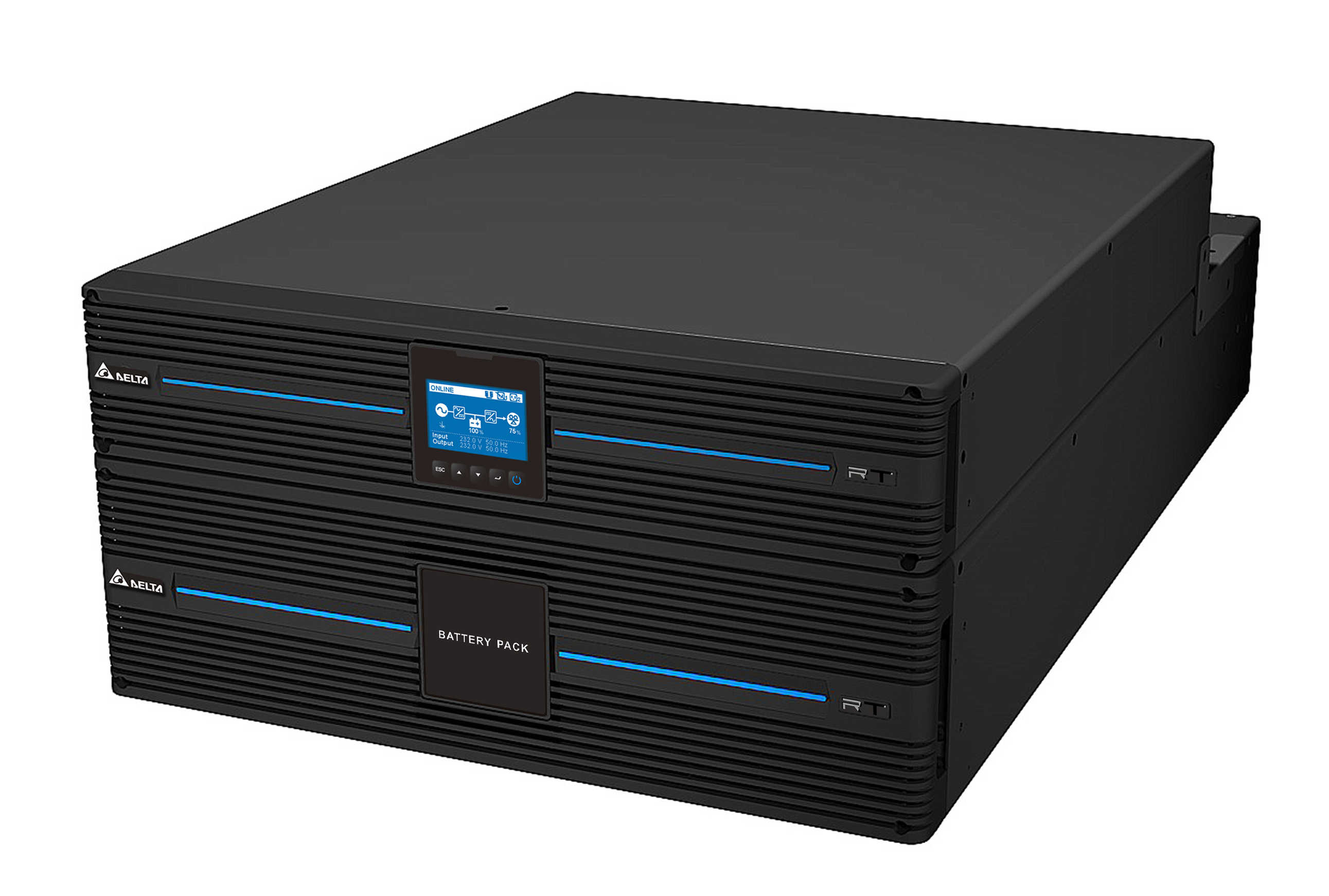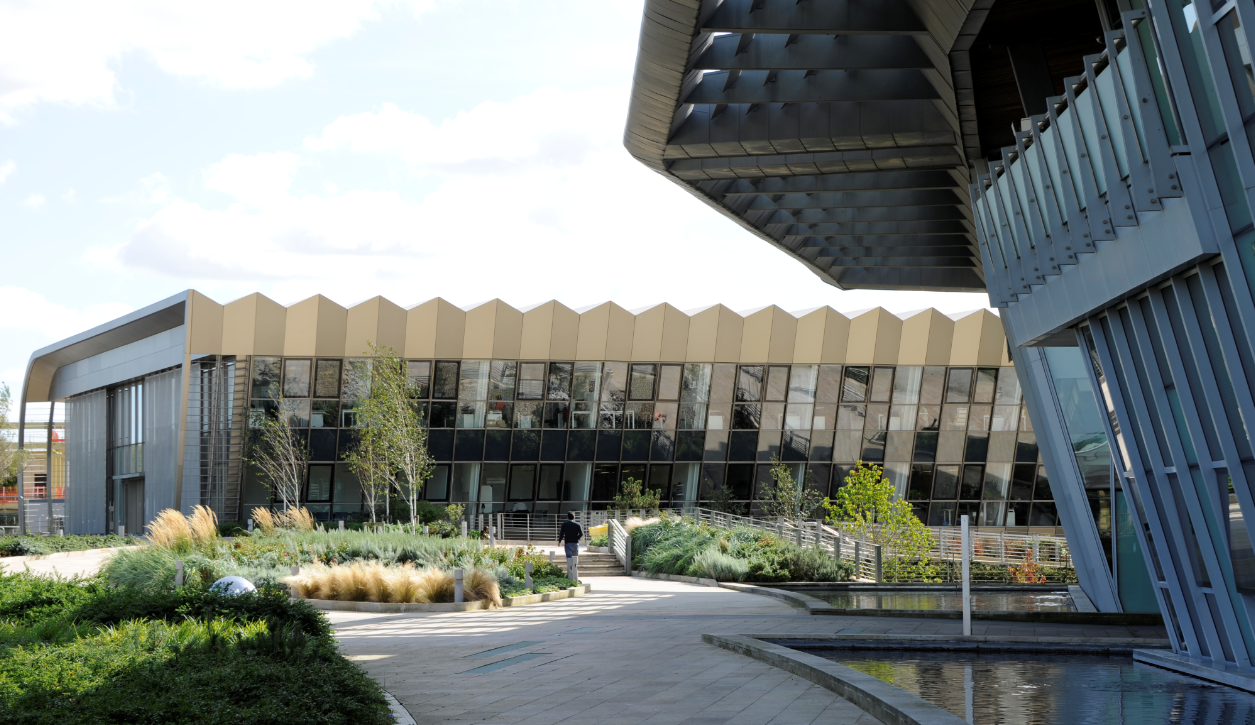Data Centre Software for Smarter Operations
Data
Data Centre Infrastructure News & Trends
Data Centre Operations: Optimising Infrastructure for Performance and Reliability
Data Centre Software for Smarter Operations
Infrastructure Management for Modern Data Centres
CityFibre begins future-proofing the digital infrastructure of Bath
Work to bring full fibre connectivity within reach of almost every home and business in Bath has now begun, with CityFibre breaking ground in Weston.
The UK’s
largest independent full fibre platform is investing £25m in a
city-wide network that will future-proof Bath’s digital needs for
generations to come.
Along with its build partner, Kier
Group, CityFibre is working in close partnership
with Bath & North East Somerset Council and local
communities to deliver a fast rollout while minimising potential
disruption.
Each area will usually take a few weeks to complete, however, construction teams will typically only be outside each home for two to three days. CityFibre will be in touch with residents by post ahead of work starting.
The overall project is expected to reach
completion by 2023 but the
first services will go live for people to take advantage of much
sooner. As the network is completed in each neighbourhood, internet
service providers (ISPs) will begin delivering some of the fastest and best value broadband
packages available in the country.
In Bath, services are not yet live but will be available from a range of broadband providers. Across the UK, CityFibre is already working with launch partner Vodafone to deliver next generation broadband services, with TalkTalk and other providers expected to join the network soon.
People interested in giving their home broadband a boost should enter their location in our postcode checker to see when they will be connected. They can also submit their details to be kept up to date on progress and discover who they can get gigabit services from once their street is connected.
Speaking of the project, Neil Madle, CityFibre’s City Manager for Bath, says: “Bath is a historic city most often associated with the likes of Jane Austen and its Roman Baths, but it’s also a forward-looking area with one of the fastest growing tech economies in the UK. I’m immensely proud to see work getting underway in Bath today as it means businesses and residents will soon have access to the best infrastructure available. It’s important to remember that any short-term disruption will pay off tremendously in the long-term. Once the network’s built, it will serve the community’s connectivity needs for decades to come and underpin the city’s digital ambitions.”
Full fibre networks, unlike many of the
copper-based ‘fibre broadband’ services available today, use 100% fibre optic
cables to carry data at light speed all the way from the home to the point of
connection. This gives users speeds of up to 1,000 Mbps for upload
and download, near limitless bandwidth and connectivity users can depend
on.
A full fibre connection also goes far beyond
simply enabling access to the latest entertainment at lightning speed. As an
essential digital utility, full fibre boosts households and businesses alike,
with experts saying
it will drive a range of economic benefits, such as making us more productive
and innovative.
Councillor Richard Samuel, deputy Leader and cabinet member for Resources and Economic Development at Bath & North East Somerset Council, comments: “It is fantastic that CityFibre is now ready to start delivering its £25m infrastructure investment programme in Bath, providing a citywide network that will benefit residents, businesses and services. This is a once in a generation upgrade that will future-proof our network infrastructure at a time when connectivity has never been so important. Access to fast reliable broadband is vital to the recovery of the local economy, enabling local businesses to attract the best talent and more residents to access or return to employment through flexible working.”
Beatrice - 7 June 2021
Data Centre Operations: Optimising Infrastructure for Performance and Reliability
Data Centre Software for Smarter Operations
Data Centres
The evolution of mission-critical digital servicing models
With increasing demands for
mission-critical system reliability, prevention of data centre and edge
computing downtime is far better than a reactive cure. Anticipating that an
outage or power event could happen at any time, and taking steps to minimise
the likelihood of disruption, is of course preferable to dealing with any
potential problems after they have arisen, but what steps can operators take in
the quest to mitigate downtime?
The Uptime Institute’s 10th annual data centre survey found that outages are occurring
with disturbing frequency and are becoming both more damaging and expensive.
One third of survey participants, for example, admitted to experiencing a major
outage in the last 12 months, and one in six claimed it had cost them more than
$1m (+£731K).
What’s interesting is
that 75% of survey respondents stated that downtime could have been prevented
with better management, training and improved processes. Consequently, a well thought out and meticulously followed proactive
maintenance, or digital servicing, program is essential to safeguard against the
risk of IT or network malfunction.
Whether downtime is caused through neglect,
failure, human error, or through wear and tear of the IT, power or cooling
equipment, one can never completely remove the ability to mitigate major events.
However, with a smart and diligent approach to planning, we can at least reduce
its impact on business if and when such an event occurs.
Traditional
servicing models
Today, preventative maintenance typically
means regular inspection and testing of mission-critical systems, including timely
replacement of consumables such as batteries, which are crucial to ensure the
reliability of uninterruptible power supplies (UPS). Other critical
replacements can include capacitors, filters and humidifier cylinders, updates or
replacement of intelligent software and firmware, alongside a detailed and
up-to-date record of the status of any such repairs with key stakeholders.
In the past, much of the physical
maintenance was calendar based, with manual checks being made at regular,
specified intervals. As always, the trade-off between cost and reliability is often
determined by when such checks were last made, or the criticality of the
systems. This, for example, might take place quarterly, half yearly or
annually. In many cases, the more frequent the support, the more reliable the
operation but the greater the cost, which could often be a key deterrent to
decision makers. If budgets were tight, then maintenance was less frequent,
which undoubtedly creates risk for business and mission-critical assets.
Evolving
your service plan
More recently, one of the major issues has
been the adoption of edge computing, where with a greater number of systems
deployed over a larger geographical area, it is no longer practical or cost
effective to have service personnel on site. Therefore end-users have begun to
look to technology as an enabler to overcome this issue.
During the last decade, software systems have had to quickly evolve, especially to meet the accelerated demands for digital transformation experienced during the last year. Now, with the growing availability and capabilities of intelligent management software, and the proliferation of distributed IT, remote management of multiple sites from a single software application is becoming more common.
Not only does such software provide a
cost-effective means of monitoring the status of distributed assets in real time, it helps to move the practice of preventative
maintenance from a traditional ‘calendar-based’ model, to a conditions-based model.
Further, armed with immediate status information, maintenance visits for data centres and critical IT can be kept to minimum, ensuring costs remain manageable. Instead, via proactive alarms and data-driven algorithms, customers can check the health and status of their equipment at any moment, ensuring any issues are proactively rectified.
Not only does this drive operational efficiency and uptime, it reduces cost, especially where time was incurred for maintenance of systems that were in an acceptable working order. Due diligence, however, remains absolutely critical, but utilising IoT-enabled technology to streamline costs, operations and maintenance removes much of the headache from the traditional approach, and allows digital servicing to be performed at the time when it is most beneficial.
Digital twins and condition-based maintenance
Condition-based maintenance is considered
the next evolution in digital servicing and utilises artificial intelligence
(AI) and big data analytics to continuously provide an estimate of how well an
individual component or a specific system is performing. This data-driven
approach provides end-users and external service partners, such as trusted vendors
and managed service providers (MSPs), with up-to-the-minute insight and schedules
intervention only when necessary. Data is crucial and the more information gathered
by such remote monitoring systems, the more accurate the algorithms can be in
calculating performance, and telling whether or not it is in need of repair or
replacement.
The growing adoption of intelligent systems
alongside big data analytics, AI and machine learning is producing more
sophisticated calculation of critical components such as battery life
expectancy in UPS. One such example is the evolution of digital twin
technology, in which the provision of a digital replica of a physical asset,
deployed in a data centre or edge environment, can be modelled and analysed.
Monitoring the difference in performance
between the actual and digital systems can alert an operator if the performance
of the real-world system has degraded below expectations, and should a
component fail or be in need of maintenance or replacement, critical service
teams can be dispatched to quickly remedy the situation.
Calculating
risk
Frankly, the condition-based approach offers
a more cost-efficient solution to maintaining a systems health without impairing
reliability. However, the next evolutionary state in preventive methodologies
is risk-informed maintenance, which builds on the analytical capabilities of
modern approaches via next-generation data centre infrastructure management
(DCIM) software. This enables maintenance to be planned based on an assessment
of risks, effects of failure and calculated costs.
Such a strategy attempts to balance the
Probability of Failure (PoF) and Consequences of Failure (CoF) of each asset,
yet the promise of risk-informed maintenance is that interventions across a
number of sites or installations can be prioritised with limited maintenance
resources. However, to ensure reliability, such an approach will depend on an
operators ability to accurately calculate the probability of failure, meaning
software is absolutely crucial to the process.
As of today, a fully risk-informed
maintenance program is probably beyond the means of most mission-critical
facility operators. Nonetheless, the proliferation of data being captured by
today’s systems and the continuous improvement in data analytics and AI are leading
the industry toward a situation where risk-informed maintenance will, in
future, become the norm – improving operational efficiency as well as the
reliability of mission-critical infrastructure.
However, what’s crucial to remember is that
expertise is essential, and no matter how technology is used to reduce downtime
and mitigate risk, none will ever remove the need for technically competent
maintenance staff to effect any changes and upgrades. Especially when, despite
all precautions, a critical malfunction occurs.
As technologies continue to evolve the
human element becomes ever more critical, and when transitioning from preventative
to remedial modes, one will always depend on its ability to collaborate with expert
technical personnel. That much remains unconditional.
by Wendy Torell, Senior Research Analyst, Schneider Electric Data Centre Science Centre
Beatrice - 27 May 2021
Data Centre Infrastructure News & Trends
Data Centre Operations: Optimising Infrastructure for Performance and Reliability
Data Centre Software for Smarter Operations
Data Centres
What data centres should look for in a compact UPS
Data centre density and power requirements are going up. As a result, more and better backup power is needed. Many data centres, however, have only limited space available. A very compact and powerful uninterruptible power supply (UPS) can often remedy the situation. To choose the right one, small and medium-sized data centres must consider cooling, redundancy, efficiency, architectures, and more. New applications such as high performance computing and artificial intelligence are shaping the design and operation of small and medium-sized data centres. As energy prices rise and budgets tighten, more efficient operation is necessary. One way to reduce costs, save space, and lower energy consumption is to put more IT resources into each rack.
But this creates challenges. Additional UPS requirements can cause floor space constraints unless the density of the deployed UPS keeps pace with the new IT equipment it supports. Data centre architecture also influence the capabilities a UPS system should offer. Consequently, choosing a backup power solution for high-density applications requires consideration of the technologies in both the data centre and the UPS.
HPC, AI, and densityBig data analytics, machine learning, and AI are forcing data centre power infrastructure to adapt. High performance computing (HPC) platforms usually include GPUs and CPUs working in parallel to handle these new workloads. This can mean new racks full of high-end GPUs that excel at floating point calculations for applications such as medical diagnostics. Per rack density rises dramatically with HPC, up to 20-30 kW and more. Over 50% of respondents in the survey “The Infrastructure Imperative” conducted by 451 Research reported operating high-density HPC data centre infrastructure.
Converged and hyperconverged infrastructureConverged infrastructure (CI) and hyperconverged infrastructure (HCI) are two further trends we are seeing alongside—and in some cases in combination with—HPC. These architectures do not impact density so much but they have implications for the reliability required of a UPS system.
CI is usually seen as large rack-scale platforms that merge compute, storage, and networking as a complete solution. HCI, on the other hand, is available as 1U or 2U rack units that include a multi-core server and a local storage array. The main architectural difference is that in CI, storage attaches directly to the physical server. HCI, in contrast, shares storage across all virtual machines (VMs).
As much as half of data centres are now using hyperconverged infrastructure. In these virtualized, high density IT environments, a power outage can have a much wider impact than it would in a non-converged environment. Consequently, the reliability of the UPS and features such as +1 redundancy operation are crucial in these scenarios.
Power as a major cause of downtimeThe most frequent cause of data centre outages is power—by a considerable margin. A study by the Uptime Institute claims that 37% of outages are caused by power issues, while the next-most-frequent cause (software and IT systems) is only to blame for 22% of such incidents.
One phenomenon that may be contributing to these outages is “creeping criticality”: this can occur when infrastructure silently crosses the threshold of criticality due to increasing resiliency needs while power infrastructure remains unchanged. Rising density caused by the gradual implementation of more HPC or HCI can produce this type of situation.
And data centre downtime is costly: over 10% of recent incidents resulted in costs of over $1 million. All the more reason to examine UPS requirements closely.
The right type of UPS for mission critical dataThe three major types of uninterruptible power systems available today are standby, line interactive, and online. The first two may involve limitations in the way that they correct power quality anomalies from the supply such as long switchover times (25ms) in the event of an outage, which disqualifies them for most mission-critical applications in small and medium-sized data centres.
An online double conversion UPS such as the new 5-20kVA Amplon RT models from Delta, however, has no switchover time at all. These devices take grid power, convert it to DC power to charge their batteries and then convert the power from the DC bus back to AC to power IT loads. The huge advantage here is that power is always already coming from the DC bus; if power from the grid is disrupted, no switchover is required. The batteries also serve to buffer transients and any voltage drops, resulting in very clean power.
A UPS system that offers parallel operation can provide longer run times. Even more crucially, it ensures that power is still available if one of the UPS units or battery strings in the configuration fails. It is often referred to as +1 redundancy when two UPS systems are running in parallel. Multiple UPS systems configured in parallel is known as an N+1 architecture, with N denoting the number of UPS systems required to handle the load and the +1 as backup in the event that one of the N units fails. A parallel UPS setup is highly beneficial for mission-critical applications in fields such as banking, manufacturing, and healthcare, where unexpected downtime can have serious repercussions.
Batteries are an essential component of any online UPS, but they also have a limited life. Battery maintenance and replacement is inevitable at some point. Lithium-ion batteries, however, require less frequent maintenance, have a higher power density, and can easily provide twice the useful life of lead acid. That translates into needing to replace fewer batteries, which reduces costs — a key benefit for high-density data centres operating within tight cost constraints.
Bypass control lets the UPS be completely removed from the power distribution system. The ability to switch over to grid power and remove the UPS from the picture is critical in two cases: one, the UPS is defective, or two, it requires maintenance. A bypass allows the maintenance to take place with no disruption to the load. Without a bypass, the unfortunate situation can arise in which power from the grid is available, but the data centre is offline because the downstream UPS is not functional.
Selecting the right vendor and product for high densityHaving a global organization such as Delta Electronics that can deliver and service the required number of UPS systems practically anywhere in the world is a crucial advantage for data centre operators. The new Amplon RT Series 5-20kVA from Delta, for instance, is a line of online double-conversion UPS systems that provide a wealth of features for enhanced resiliency and class-leading density thanks to their compact 2U form factor.
This is a very beneficial combination for companies facing increased power requirements due to rising perrack densities and limited floor space. The unity power factor, high system efficiency, hot-swappable batteries, and parallel configurations the RT series features also help resolve issues arising from higher densities. What’s more, the 5-20kVA is the first UPS on the market to offer lithium-ion external battery cabinets as standard. You can even replace a single battery instead of the entire string, while the bypass keeps systems online.
Other applications will benefit from the new RT Series UPS systems as well; edge computing installations, for instance, also have limited space available and serve mission critical applications in the manufacturing and telecommunications industries. Considering the power distribution box and maintenance bypass breaker are integrated into these units, a broad range of small-to-medium-sized facilities stand to benefit from their reliability and high efficiency.
By Ross Peringuey, Commercial Product Manager MCIS EMEA
Beatrice - 4 May 2021
Data Centre Operations: Optimising Infrastructure for Performance and Reliability
Data Centre Software for Smarter Operations
Enterprise Network Infrastructure: Design, Performance & Security
Infrastructure Management for Modern Data Centres
News
New laws to wipe out rural mobile 'not spots'
Mobile signal blindspots will be wiped out under government plans to level up rural areas with better connectivity and unlock tech innovation in the countryside.
The government is proposing law
changes to boost ongoing efforts to improve connectivity for people who
live, work and travel in rural areas.
The reforms will remove one of
the biggest barriers to better coverage in the countryside by reducing build
time and costs for new infrastructure while protecting rural areas by
minimising any visual impact.
Under the proposals, mobile
companies will be allowed to make new and existing masts up to five metres
taller and two metres wider than current rules permit. This will increase the
range of masts and allow operators to fit more equipment on them so they can be
more easily shared.
The move will turbocharge the
delivery of the £1 billion Shared Rural Network being built to eliminate 4G
mobile ‘not spots’ in the countryside and will speed up rollout of
next-generation 5G networks.
It will incentivise mobile
firms to focus on improving existing masts over building new ones, with fewer
new masts needed for rural communities to get a better signal now and to take
full advantage of future 5G-connected technology. This includes innovations in
remote healthcare, self-driving vehicles and smart devices such as fridges, TVs
and heating systems.
Stricter rules will apply in
protected areas, including national parks, the Broads, conservation areas,
areas of outstanding natural beauty and world heritage sites.
The plans also include proposals
to bring better mobile coverage for road users by allowing building-based masts
to be placed nearer to highways.
The news comes as industry
experts and academics set out recommendations on how to reduce the UK’s
reliance on a small number of equipment vendors in the telecoms supply chain.
Digital Secretary Oliver Dowden says: “We want to level up the country and end the plague of patchy and poor mobile signals in rural communities.
“Today we are setting out plans to make it easier for mobile firms to transform connectivity in the countryside and propel villages and towns out of the digital dark ages - providing a welcome boost for millions of families, businesses and visitors.
“These practical changes strike a careful balance between removing unnecessary barriers holding back better coverage, while making sure we protect our precious landscape.”
Most new masts will still need
to be approved by local authorities, which will have a say on where they are
placed and their appearance. Robust conditions and limits will remain in place
to make sure communities and stakeholders are properly consulted and the
environment is protected.
Hamish MacLeod, Director of Mobile UK, states: “We welcome the proposals set out in this consultation which will provide better certainty and flexibility to technological changes required to build world-class mobile networks. We urge the Government that to assist mobile companies to meet its ambitions targets for deployment, it brings about legislative change as quickly as possible.”
A joint technical consultation between the Department for Digital, Culture, Media and Sport (DCMS) and the Ministry for Housing, Communities and Local Government (MHCLG) has been published today with details of the changes. It follows an earlier consultation in 2019 on the principle of the reforms.
The consultation seeks views on
reforms to permitted development rights in England:
Existing mobile masts to be strengthened without prior approval, so that they can be upgraded for 5G and shared between mobile operators. This would allow increases to the width of existing masts by up to either 50% or two metres (whichever is greatest), and in unprotected areas allow increases in height up to a maximum of 25 metres (previously 20 metres). Greater increases will also be permitted subject to approval by the local authority.
New masts to be built up to five metres higher - meaning a maximum of 30 metres in unprotected areas and 25 metres in protected areas, subject to approval by the planning authority.
Greater freedoms for slimline ‘monopole’ masts up to 15 metres in height, which are less visually intrusive than standard masts and used for 5G rollout, in unprotected areas. This could mean operators notifying local authorities of their intention to proceed without needing prior approval. This would align it with current rights that telecoms operators have for telegraph poles.
Building-based masts to be placed nearer to highways to bring better mobile coverage to road networks, subject to prior approval, and in unprotected areas smaller building-based masts to be permitted without prior approval.
Cabinets containing radio equipment to be deployed alongside masts without prior approval and to allow greater flexibility for installing cabinets in existing compounds - fenced-off sites containing masts and other communications equipment - to support new 5G networks.
DCMS will also lead on a new
code of practice for mobile network operators. This will provide updated
guidance on how operators and local authorities can work together to build
communications infrastructure the country needs. It will also contain best
practice for the siting of new infrastructure, particularly in protected areas,
and ensuring stakeholders are properly consulted.
The consultation will run for
eight weeks and closes on 14 June 2021.
Telecoms Diversification
Taskforce - final report
Led by former BT boss Lord
Livingston of Parkhead, the Telecoms Diversification Taskforce was set up by
the government to provide independent advice on how to boost competition and
innovation in the UK telecoms market and build an open, sustainable and diverse
supply chain.
It follows the government’s
decision to remove Huawei equipment from UK 5G networks by 2027. While
necessary to protect national security, it means the UK will be reliant on only
two other 5G equipment suppliers: Nokia and Ericsson.
The taskforce’s report will support the government as it delivers its £250 million Diversification Strategy, mitigating the resilience risks to 5G networks ahead of the 2027 deadline so people can have confidence accessing the economic and social benefits brought by 5G. It recommends:
Working through telecoms standards-setting bodies to encourage best practice in security and open networks;Creating the right environment for diversification through policy interventions - for example, setting out a timetable for the winding down of 2G and 3G networks to support the entry of new vendors into the UK market; Identifying interventions and investment to accelerate the development and adoption of Open Radio Access Network technology, including setting up a fund for developing new products and ensuring testing facilities such as the UK Telecoms Lab and SONIC meet industry needs;Identifying opportunities to invest in long-term research and innovation to build UK capability for current and future generations of telecoms technology.
Now the taskforce has completed
its work, the government will study the findings and respond fully in due
course.
Matt Warman, Minister for Digital Infrastructure, says: “Our £250 million strategy will unleash a wave of innovation across the UK and make sure companies have a wide range of revolutionary 5G technology to choose from that is trusted and secure.
“I welcome today’s report from the Telecoms Diversification Taskforce. It will be instrumental in helping us prepare our networks for next-generation mobile technologies. We will now consider its recommendations and respond in due course.”
Lord Livingston of Parkhead, Chair of the Taskforce, comments: “It has been a privilege to lead the Taskforce and help drive forward the government's important work to diversify the telecoms supply chain and reduce reliance on high-risk vendors.
“The government’s Diversification Strategy set out a clear ambition and the Taskforce has suggested concrete actions and policy recommendations to help it meet its aims.
“The UK now has the opportunity to create a more diverse network and be an international leader in the adoption of next-generation network technology. This will present substantial opportunities for UK based suppliers and users alike.
“I would like to thank all of the Taskforce, made up of an outstanding team of experts from industry and academia, for their commitment and expertise in producing this report.”
Beatrice - 20 April 2021
Data Centre Operations: Optimising Infrastructure for Performance and Reliability
Data Centre Software for Smarter Operations
Enterprise Network Infrastructure: Design, Performance & Security
News
News in Cloud Computing & Data Storage
Pure sees customer adoption across geographies and industry segments
Pure Storage announced its continued growth of its Pure as-a-Service subscription offerings. Throughout the last year, Pure saw increased customer adoption in every key market globally. In Q4 alone, new Pure as-a-Service customers included major clouds, financial institutions, hospitals, telecommunications companies, and more, including a customer with a Pure as-a-Service commitment of more than $10M. In total, Pure’s annual subscription services revenue, which includes Pure as-a-Service and Evergreen and makes up more than 30% of total revenues, exceeded $500M in FY21, representing 33% year-over-year growth.
Pure has continued to advance its subscription services platform, reducing complexity by eliminating additional licenses and support costs, and delivering new levels of transparency not seen before in the storage industry. Pure’s Service Catalog, introduced in Q4, mirrors a public cloud experience, with increased granularity, and lower entry points designed to easily scale. Now, customers can use the new Cost Calculator to estimate their Pure as-a-Service monthly cost, making it even simpler for customers to choose the right storage service level for each workload.
“Only Pure delivers a true enterprise class utility with flexible storage consumption; a cloud experience on premise; an easy path to move data to the cloud at any time; and aligns spend with actual consumption. As customers continue to face dynamic business demands, Pure as-a-Service delivers the flexibility, simplicity and reliability they need.” says Prakash Darji, VP and GM, Digital Technology Services Group, Pure Storage
“Pure’s vision of storage as code proved its worth during the pandemic, enabling our customers to scale storage capacity to stay in step with rapidly changing demands. With Pure as-a-Service, our customers could pay for the exact capacity they needed while still getting the same performance and availability they’d have in a traditional cloud desktop.” comments Robert Green, President, Co-Founder, and CTO, Dizzion
"Pure was the only supplier to offer us a flexible, innovative, and scalable offering with Pure as-a-Service, which was the deciding factor. We were won over by its fully opex model, consumption-based billing and short-term contracts." adds Fabrice Joffre, Technical Director, Hopps
"We've found that with Pure as-a-Service we get all the benefits of a flexible consumption model without having to compromise on security." concludes Jo Verstappen, Chief Executive Officer, Open Line.
Beatrice - 15 April 2021
Data Centre Operations: Optimising Infrastructure for Performance and Reliability
Data Centre Software for Smarter Operations
News
News in Cloud Computing & Data Storage
TigerGraph raises $105 million to accelerate graph analytics on Cloud
TigerGraph has announced it has raised $105 million in Series C funding, the largest funding round to date within the graph database and analytics market. The round was led by Tiger Global and brings TigerGraph’s total funding raised to over $170 million.
The investment reflects TigerGraph’s growth and the massive potential as businesses continue to move to the cloud. With the transactional and analytical workloads moving to the cloud made possible by companies like Snowflake, Confluent, and Databricks, TigerGraph is quickly becoming the graph database of choice to connect, analyse and learn new insights from the data. With its distributed native graph architecture, TigerGraph helps organisations scale fast and analyse many different aspects of data to be used with each other to form new models and generate new insights. These new patterns and insights enhance a company’s analytics or machine learning capabilities and can be deployed anywhere with multi-cloud flexibility and support the data security requirements for regulatory compliance.
Over the last 12 months with the COVID-19 pandemic, companies have embraced digital transformation at a faster pace, driving an urgent need to find new insights about their customers, products, services, and suppliers. Graph technology connects these domains from the relational databases, offering the opportunity to shrink development cycles for data preparation, improve data quality, and identify new insights such as similarity patterns to deliver the next best action recommendation. Data-driven solutions require intelligent apps and connected data that leverage powerful graph engines to connect, analyse and learn from the data companies are storing in the cloud. These events helped TigerGraph experience massive growth, more than doubling revenues and customers over the past year. It has also continued building a very active and fast-growing developer community, receiving the highest marks in a recent analyst report - TigerGraph was named a leader for Graph Data Platforms in the analyst report.
“By 2023, graph technologies will facilitate rapid contextualisation for decision making in 30% of organisations worldwide,” according to Gartner. Mark Beyer, Distinguished VP Analyst with Gartner, shared the following in a Gartner report regarding the adoption of graph technology in the enterprises, 'To Graph or Not to Graph? That Is Not the Question — You Will Graph'.
Organisations of all sizes are adopting graph-based analytics and AI by leveraging the relationships in the connected data to drive better outcomes. TigerGraph is galvanising the graph and AI community, organising the first open industry Graph + AI Conference featuring presentations by innovators including UnitedHealth Group, Jaguar Land Rover, Intuit, Intel, Xilinx and Accenture. TigerGraph is deeply involved and on the steering committee for the development of the Graph Query Language standard, GQL, along with other database vendors such as Oracle and Neo4j, and will enthusiastically support the GQL standard immediately upon finalisation.
“For over 40 years, businesses’ number one data management challenge has been how to easily ask business questions across all of their data in real-time to guide their operations. The human brain connects data to derive new insights and helps us decide what to do next. TigerGraph’s mission is to power an enterprise brain with graph and AI that discovers these new insights within the enterprise data stored in the cloud and on-prem,” says Dr. Yu Xu, founder and CEO of TigerGraph. “TigerGraph is leading the paradigm shift in connecting and analysing data via scalable and native graph technology with pre-connected entities versus the traditional way of joining large tables with rows and columns. This funding will allow us to expand our offering and bring it to many more markets, enabling more customers to realise the benefits of graph analytics and AI.”
The company will use the funding for product innovation and development to better support its customers, including TigerGraph Cloud on Google Cloud Platform (available March 2021), plus further multi-region support on AWS and Azure. It is also expanding its global reach with local support in Asia and Australia/New Zealand. Meanwhile, the company will scale up with additional hiring in the Americas, EMEA, and APAC to meet increased product demand.
Beatrice - 18 February 2021
Data Centre Operations: Optimising Infrastructure for Performance and Reliability
Data Centre Software for Smarter Operations
Data Centres
Infrastructure Management for Modern Data Centres
Rosebery Group partners with Schneider Electric to improve safety
Schneider Electric has announced its partnership with Rosebery Group for a safety project at a UK-based global enterprise data centre. Five VAMP 321 Arc Flash relays, 13 Point Sensor I/O units, 11 Current Monitoring units and 145 Point sensors will be installed across the multiple switchboards across the data centre.
Arc flash incidents can be detrimental to data centres, no matter how large or small. Arc flash can cause power outages, but also result in loss of business, extensive material damage and can seriously jeopardise the safety of operational staff. This project is an investment in the longevity of the electrical switchgear and increased personnel safety at the data centre.
“Providing a safe and effective operation for our clients is our top priority,” says Andy Starkey, Controls Manager at Rosebery. “By partnering with Schneider Electric, we have been able to leverage the expertise of its engineers in power distribution, protection technology and control equipment. We are now recommending the best-in-class standard represented by the VAMP 321 to all our Clients.”
Mitigating risk
and managing disruption with a high-performance solution
Rosebery were seeking a
trusted partner that could deliver superior safety in a low-voltage
environment. Schneider Electric’s high-performance VAMP Arc Flash protection
and monitoring relay ensured the data centre would benefit from fire risk
reduction, reduced loss of production, and prolonged switchgear life if an arc
flash should occur. The data centre will also benefit from a fast installation
and reduced insurance and investment costs. The site operates at low voltage,
with a total load of 8MVA, two 11kV intake supplies and 8MVA of standby
generation.
Due to operational restrictions, the installation needed to be retrofitted on a live system with minimal disruption to service. To mitigate nuisance tripping due to unexpected light sources during normal operational conditions, Schneider Electric ensured that the overcurrent monitoring was employed in addition to the light detector and point sensors. Schneider Electric also performed extensive testing and commissioning prior to energisation to ensure the correct operation of the installation.
“Schneider Electric is fully committed to delivering the highest standard of safety and connectivity, and we are delighted to partner with Rosebery as they move towards smart protection and monitoring at this site,” adds Paul Brown, automation account manager at Schneider Electric. “Increased availability and safety in real time is essential to this transition. With the full interoperability of the VAMP 321 as a standalone arc flash system, the end user will be able to protect their entire network with fully zoned light and current sensing and mitigate any developing faults while maintaining the highest levels of cybersecurity.”
Pioneering
reliable arc flash protection technology worldwide
Schneider Electric’s VAMP
range is a pioneer in the field of arc protection with close to 10,000 systems
in service worldwide, ranging from single protection units to multi-zone arc
flash systems. VAMP arc protection measures fault current and light through arc
sensor channels which minimises burning time when a fault occurs by cutting off
the current feeding the arc flash. The latest edition, the VAMP 321, can send a
trip signal to the circuit breaker within 1 milli seconds, meeting the highest
standards of arc flash protection.
This UK data centre will be
the first large-scale implementation of the product in the UK. Key features
include:
Fastest possible detection and disconnect times to eliminate extensive burn times and dramatically increase repair and recovery time, keeping downtime to a minimum.Ease of retrofit installation, use and maintenance, meaning simple integration and reduced total cost of ownership compared to other solutions on the market.Advanced connectivity, with plug and play modular parts and support for seven communication protocols, including IEC 61850 1 and 2 compliance - the international standard for communications in substations.
The VAMP 321 Arc Flash
protection relay is part of PowerLogic, Schneider Electric’s advanced range of
accurate power quality meters, designed to meet the growing demands of your
power network. PowerLogic smooths the power supply, protects the network, the
installation and the operator by improving the power factor and hence the
quality of the power.
Beatrice - 18 February 2021
Data Centre Operations: Optimising Infrastructure for Performance and Reliability
Data Centre Software for Smarter Operations
Data Centres
Infrastructure Management for Modern Data Centres
EfficiencyIT contract to upgrade power at Wellcome Sanger Institute
EfficiencyIT has announced it has secured a new contract with the Wellcome Sanger Institute. The project will see EfficiencyIT deploy more than 300 custom-designed APC by Schneider Electric Rack Power Distribution Unit (PDU) metering systems at the on-premise data centre near Cambridge, delivering key insight into energy consumption, stranded capacity and help to lower operating expenses (OpEx).
The upgrade continues the long-term partnership between the two organisations, and will offer IT and C-level decision makers greater visibility into energy usage at Europe's largest genomic data centre, while reducing power consumption to provide savings, which will be used as additional funds for genomic research.
The project will also benefit other key Wellcome Genome Campus partners, forming part of a wider digital transformation initiative that began in 2019.
Under the guidance of EfficiencyIT the Institute selected Schneider Electric’s EcoStruxure IT data centre infrastructure management (DCIM) platform, using artificial intelligence (AI) and data analytics to help to increase visibility across its IT estate and improve energy efficiency.
“The research we undertake is sensitive, complex and imperative to life science progress,” says Simon Binley, Data Centre Manager, Wellcome Sanger Institute. “The data centre plays a fundamental role in ensuring continuity for mission-critical applications, and by optimising its performance we can reduce costs and become more sustainable, while identifying energy savings that will create more funding for life-saving science.”
A world-leader in life sciences and genomics
Based at
the Wellcome Genome Campus in the UK Innovation Corridor, the Wellcome Sanger Institute
conducts key research into life sciences, human disease and genomic sequencing.
The sheer volume of data produced by the
Institute’s fleet of sequencing machines, and the speed at which it is
generated requires use of an on-premise data centre with vast storage, power and
high performance computing (HPC) processing capabilities. Such infrastructure systems
are imperative to the science.
“Our focus has always been to consult, advise and support the Institute in achieving its digital transformation objectives,” says Nick Ewing, Managing Director, EfficiencyIT. “This second phase will see the deployment of new custom-designed APC power distribution systems, enabling the Wellcome Sanger Institute to identify stranded capacity, improve energy usage and lower its carbon footprint; all while ensuring uptime, data security and protecting the organisations on site.”
“Data centre and engineering professionals continue to play a crucial role in providing mission-critical digital infrastructure that underpins businesses on a global scale,” comments Marc Garner, VP Secure Power Division, Schneider Electric UK&I. “We’re proud to be working with our partners at EfficiencyIT to support such an incredible organisation who has, and continues to be instrumental in protecting the world against mankind’s most destructive diseases.”
Beatrice - 15 February 2021
Data Centre Operations: Optimising Infrastructure for Performance and Reliability
Data Centre Software for Smarter Operations
News
IOTech edge software platform supports Computer Vision and AI
IOTech has announced that the latest release of Edge Xpert features new capabilities to support computer vision and AI at the IoT edge. Edge Xpert, a leading edge computing platform, is the company’s value-add and commercial implementation of EdgeX Foundry.
Edge Xpert (v1.8) is now delivered
with an add-on for computer vision that enables users to run their AI
algorithms and vision models at the edge. Based on Intel’s OpenVINO toolkit,
the Edge Xpert computer vision service provides users with the capability to
deploy advanced vision-based workloads alongside their existing intelligent
edge solutions.
In conjunction with existing
support for IP camera and video device connectivity, Edge Xpert users can now
easily control camera devices, collect video streams and automatically apply AI
and vision inference right at the edge. The service supports deploying models
that can include object detection, classification and recognition. It then
passes that inferred intelligence to other services for decision-making and
control. Edge Xpert already supports ingestion of data from many industrial
protocols and devices. Users can therefore aggregate and fuse together sensor
data with vision inference results to obtain a complete and accurate picture of
the edge environment.
“Providing our users with the ability to easily run computer vision inference and advanced AI at the edge is an exciting advancement as they launch solutions into the market,” says Keith Steele, IOTech founder and CEO. “There are literally thousands of vison-based use cases, from automatic theft detection to safety systems and predictive maintenance, that all rely on computer vision and AI at the edge. We will soon be announcing a number of key partnerships and innovations in this space.”
Computer vision and AI traditionally have been employed as cloud-based IT processes. However, the next major wave of business transformations will be brought about by deploying this technology at the edge of the network. Running computer vision and AI algorithms at the edge and on-premise provides immediate and real-time operational insights that can revolutionise how businesses operate. This will be a catalyst for significant growth for vision-based AI in many industrial verticals including retail, manufacturing, transportation and venue management.
This latest release of Edge Xpert
includes additional key features that help fast-track the roll out of edge
solutions, including advanced tooling and enhancements to the existing array of
IOTech’s edge device connectors. With these features, edge devices can be
connected and automatically onboarded to the platform at scale.
Edge Xpert also includes the key features provided in the “Hanoi” release of EdgeX Foundry. These include the ability for device connectors to be distributed on different hosts to the other microservices, data tagging to uniquely identify data sources as the data is transported northbound, and many other important upgrades that help with the scalability and roll-out of Edge Xpert. In addition to this release, IOTech has launched the IOTech store, which allows users to conveniently purchase the specific software products and features they need for their edge IoT deployments. Both Edge Xpert and Edge XRT, which is a complementary product for the time-critical and resource-constrained edge, are available for immediate purchase and download on the company’s online store.
Beatrice - 11 February 2021
Data Centre Infrastructure News & Trends
Data Centre Operations: Optimising Infrastructure for Performance and Reliability
Data Centre Software for Smarter Operations
Infrastructure Management for Modern Data Centres
Putting the North of England on the digital infrastructure map in Newcastle
Stellium Data Centers, The Data Meridian, Newcastle will launch NCL-IX, the UK's newest carrier-neutral Internet exchange point on February 11th, 2021, connecting Newcastle to data from sub-sea & international networks and UK national and regional networks for content, ISPs and cloud.
The 85-minute virtual launch which takes place this February 11th at 3pm is now open for registration
The webinar will discuss the launch of the UKs latest Internet Exchange and
how it enriches the connectivity for the North of England and positions
Newcastle into the mainstream of national and regional network connectivity,
making Stellium & the NCL-IX the meeting place for data transfer from USA
to Northern Europe.
During the launch, our panel of industry experts from Stellium Data Centres
& NCL-IX, Aspire Technology Solutions, Zayo Group, North Tyne Combined Authority, Island Bridge Networks and IX Reach (a BSO company) will discuss:
The importance of the IXP in the national and the norths digital economy.How regional IXPs enable regional and national ISPs to drive value in their business.Peering and improving your network optimisation strategy.How the NCL-IX enhances a Data Centre.
NCL-IX is located at Stellium Data Centres, the UK’s largest purpose-built data
centre campus. Stellium built and will operate the Newcastle Internet Exchange
(NCL-IX) for the good of the Internet and interconnection in the North of
England.
Speaking on the launch of NCL-IX, Gerry Murray, Chief Communications Officer at Stellium Data Centres says “being the first Internet exchange of its kind in the Newcastle region, we anticipate strong demand from content networks, Internet service providers, regional ISPs and enterprise customers. Our research shows that there is tremendous need for a neutral Internet exchange that provides a reliable, quality interconnection and peering point.”
Throughout the UK there is an increasing need for reliable interconnection
platforms as a result of the growing business and consumer demand for smart
cities tools, cloud services enabling remote working, clear VOIP and
recreational services such as video on demand, quad play, gaming and apps.
NCL-IX will provide peering exchange services for the North of UK region and
ultimately to an even larger community of networks and data centres beyond.
An improved interconnection ecosystem means a better Internet. NCL-IX will
give Internet Service Providers the ability to offer their customers the best
possible end-user experience.
NCL-IX will attract a vast community of connectivity providers. Founding
members include both Zayo Networks, Aspire TS and IX Reach (a BSO company). As
well as meeting enterprise connectivity needs, our member networks provide
fixed and mobile operators with IP transit and Ethernet transport services and
are among the biggest providers of dark fibre and wavelengths in the UK.
Beatrice - 9 February 2021

Head office & Accounts:
Suite 14, 6-8 Revenge Road, Lordswood
Kent ME5 8UD
T: +44 (0)1634 673163
F: +44 (0)1634 673173









